The UK, US, and Australia have agreed to fast-track the development of hypersonic technology under a new AUKUS arrangement, aiming to bolster collective security and deliver advanced battle-winning capabilities, according to a press release.
This collaboration will facilitate the quicker development, testing, and evaluation of hypersonic vehicles and associated technologies, marking a deeper level of cooperation among AUKUS nations. The initiative also promises economic benefits, safeguarding and creating high-skilled jobs in the UK through procurement opportunities across a broad range of suppliers.
Hypersonic systems, capable of travelling at speeds far exceeding the speed of sound, include long-range strike missiles that can be launched from land, sea, or air. By working together, the AUKUS partners aim to pool resources, share testing facilities, and leverage technical expertise to accelerate the deployment of these cutting-edge systems.
UK Defence Secretary John Healey emphasised the significance of the arrangement:
“This landmark arrangement with our US and Australian partners demonstrates the commitment of AUKUS partners to staying at the forefront of battle-winning defence technology. By combining our expertise and resources with those of our closest allies, we are accelerating the development of crucial hypersonic capabilities. This work will keep us ahead of our adversaries on the battlefield, enhance our collective security, and contribute to maintaining peace and stability in an increasingly complex and dangerous world.”
The agreement includes the Hypersonic Flight Test and Experimentation (HyFliTE) Project Arrangement, which will incorporate existing national efforts, including multiple test flights of hypersonic vehicles. These tests aim to advance hypersonic concepts and critical enabling technologies through robust experimentation.
Additionally, the AUKUS defence partnership is streamlining collaboration across the three countries’ industrial bases, breaking down barriers in acquisition systems, and strengthening supply chain resilience.
The Hypersonic Technologies and Capability Development Framework (HTCDF), used to source industry support, further exemplifies the initiative’s scope. It includes over 90 suppliers from AUKUS nations and European allies, with a commercial headroom of up to £1 billion.
At the UK Defence Journal, we aim to deliver accurate and timely news on defence matters. We rely on the support of readers like you to maintain our independence and high-quality journalism. Please consider making a one-off donation to help us continue our work. Click here to donate. Thank you for your support!


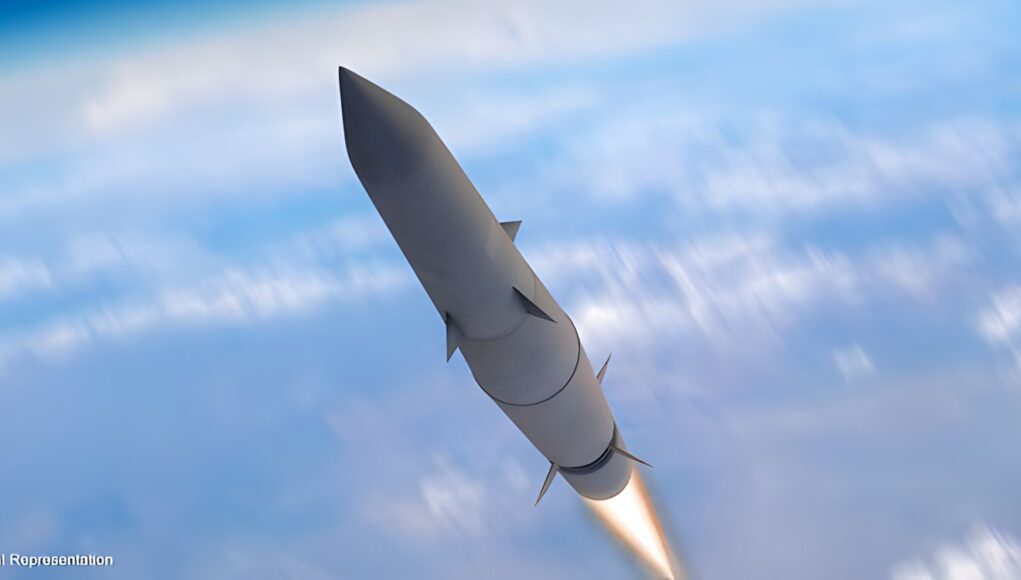
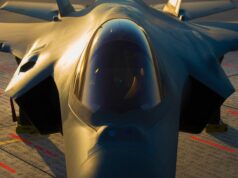




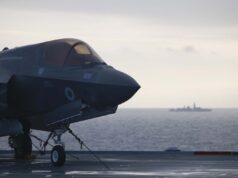

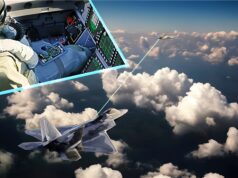
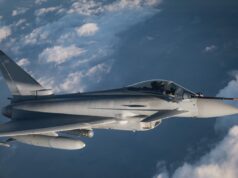
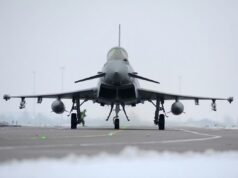

Are we sure that the USA is now a reliable partner for such things?
You think Britain can shoulder the R&D and production scale costs alone?
Ah. That’s a different question.
Yes technicall we could. But we would rather not plus it allows us to spend money elsewhere. It makes more sense to collaberate which brings us back to the original question.
If you pay and increase your armed forces it should be. If you cut ships, helicopters, ground forces etc it should not be.
I’m so happy we are developing yet another strategic tactical missile on top of the ones we are developing with Germany and the two we are developing with France.
Hopefully we can pump a few billion into this gimmick
Then we can start to work on the phasers and photon torpedoes.
My mates brother has already done a weapons Dalek in his shed.
Hello Jim
You made me smile – My turn now
There is an A! generated image on International Defence News 21/11 showing numerous Houthii missiles raining down on ships transiting the Red Sea
There is an Arleigh Burke frigate next to the targeted Turkish tanker which has an impressive wake coming from its bow!!!! or it is in full reverse at amazing speed and control
World Defence News
You’ve used the ‘phasers and photon torpedoes’ line before. Time to get some new material cause the anti-hypersonic line is wearing a bit thin.
The RAAF is not only testing the USAFs Hypersonic Attack Cruise Missile (HACM) on Australian Super Hornets on Australia’s vast weapons testing ranges (one of the few places in the world outside the U.S. where this is possible) but the ADF has confirmed that work is already underway to integrate HACM across the entire fleet of Super Hornets and Growlers. So that will give the RAAF 36 aircraft capable of launching hypersonic missiles.
While hypersonic missiles will not be a universal panacea they will provide options for high value and time critical targets alongside conventional subsonic cruise missiles. A modern airforce will need these options in its kit bag for any peer state conflict in the near future.
HACM is being built by Raytheon (now RTX) and Raytheon is now building a factory in Australia initially for SM2 and SM6 missiles but longer term local production of the HACM is also a possibility.
HACM is a direct outcome of the combined Australian/US Scifire program formalised in 2020 itself a follow on from the University of Queensland’s successful Hifire Mach 8 Scramjet program dating back to 2007. Australia has had skin in the game for almost two decades which is now paying off.
Of course the brave Polish Calvary that charged the Third Reich’s panzers probably were told that horses were all that was ever going to be needed for warfare.
Hypersonic is it doable in near future and will America really want to share their resources and research with AUKUS partners.
Why wouldn’t they be?
One word
TRUMP
america already has a deployed hypersonic missile – the dark eagle- and has quite a few other hypersonics pretty much ready for production if they get the go ahead. the issue is justifying the costs. we see russia’s best air defenses being completely useless against much cheaper and smaller systems like ATACMs and storm shadow. ATACMs are made at the rate of over 500 a year. hypersonics are exponentially more expensive and complicated to make. adversarys like russia put massive effort into hypersonics because they NEED to because the west has excellent air defenses like patriot, THAAD, SM-3 etc. the US probably has intel that chinese air defenses- due to being based on russian systems- aren’t going to fair much better. the only reason the US built dark eagle (and why they’re ok with not having hundreds of them) is its a limited use case- against very time sensitive targets… whereas russia is having to use khinzal against even fixed sites like factories when they cant get to it with anything else.
the US is asking itself why it needs to spend millions per unit for something like the AGM-183 when they expect JASSM, SIAW (which is mach 4.5 and also made for time-sensitive targets) or PRRSM/ATACMs, SM-6 launched from the ground to penetrate enemy A/D. its the same reason the west never spent billions on wunderwaffe anti ship missiles (and something russia loves to brag about- ‘US is so far behind us, they don’t even have supersonic ASM!!) because Harpoons were more than enough for the russian navy.
Agree, the west has little need for hypersonic boom dongles.
S400 is completely incapable of targeting even storm shadow fired from an Su23 with no ECM capability.
Russia and China needs hypersonics, I’ll take large volumes of LO missiles any day of the week.
For me it is the cost. If you can have 5 or 10 Stormshadow ( or it’s upcoming replacement) for the cost of one super cooper missile, I know which one I would rather have
Obviously there is a place for a ( not ” loads” ) of hypersonic, for those time critical targets.
When I saw the headline I thought it was going to talk about hypersonic missile defence, not the attack type.
AA
S-400 is not supposed to fire against a Storm Shadow, this is for short range missile.
it cant hit ATACMs either. in fact last night yet another was destroyed by ATACMs. what exactly is it supposed to stop? soviet era jets?
Amazing
Well the Indians seem to think so as they have just test fired one, but I guess these days we can’t possibly compete with them any more even in collaboration with allies.
Out of interest on a side note I can’t wait to see how well Australia’s new innovative hybrid solid propellant/liquid oxidiser orbital rocket fairs, wonder if any of its technology might even spill into these efforts, including its ultra efficient British electric turbo pumps.
Or two words ‘Manhattan Project’. The Americans tried to cut us out of that, after we pooled our resources to get it done, and even now Hollywood likes to minimise our contribution. I wonder how reaction engines folding effects British hypersonic research?
This is merely an action IAW a previously stated AUKUS Pillar iI initiative. Actually, the UK is in an enviable position re hypersonics. Through participation in multiple independent programmes, there is a virtually inevitably increased probability of participating in a successful programme Then, the UK would be in an ideal position to export weapons to other members of the unproductive partnerships. Basically, a can’t lose proposition, aka as hedging one’s bets. It appears almost as though the blokes at MoD are executing a preconceived plan. 🤔😉
I’m not convinced we will have any meaningful participation.
Indeed I really don’t see how it’s even possible given US banns on foreign source weapons and the political aspects in congress. The US will develop and build a hypersonic weapon then let us and Australia buy it. We may get to build one minor components. Production runs will be too small for anything other than US based production and there will be no export market.
We will also be spending money on our own inventory for FC/ASW super sonic and LO versions as well as what every land based missile we are developing with Germany.
Most US Hypersonic’s are deploying from strategic bombers which we don’t have or land based launchers which we also don’t have and would have to acquire and realistically where would we even station them that would make them useful.
I just don’t see this progressing beyond a research program for the UK.
Glad someone sees the up side. I tend to agree with you, this is fundamentally research at this stage over precise weapons and will inevitably progress our capabilities even if an actual weapon doesn’t result from it in the end. That said unless Trump sabotages it I suspect it will, even if it’s a way of exploiting fundamentally US led weapon systems in some form I know some don’t see it but hypersonics will be common over the next decade so wise to gain as much insight and participation as possible.
The U.K. is incapable of going to war with China so what do we need this for now? The actual forces need so much more than a few missiles.
Escorts, army equipment, helicopters, drones, supply ships, air defence, submarines, People etc etc.
These things are what you do when you have the basics sorted out.
To add to that getting a full load of missiles and warheads back on submarines would be much better idea. We currently rely on 8 missiles for the complete deterrence. If we assume 2 won’t work as intended, 1 gets intercepted, 1 or 2 has the single low yield warhead that leaves 3-4 for a maximum of 30ish warheads. We know it’s less than that.
Putin may fancy his chances at that.
Aswell to think the USA will risk its country if it’s just the U.K. that’s hit is a big mistake.
Putin wants to make a statement to stop the help for Ukraine.